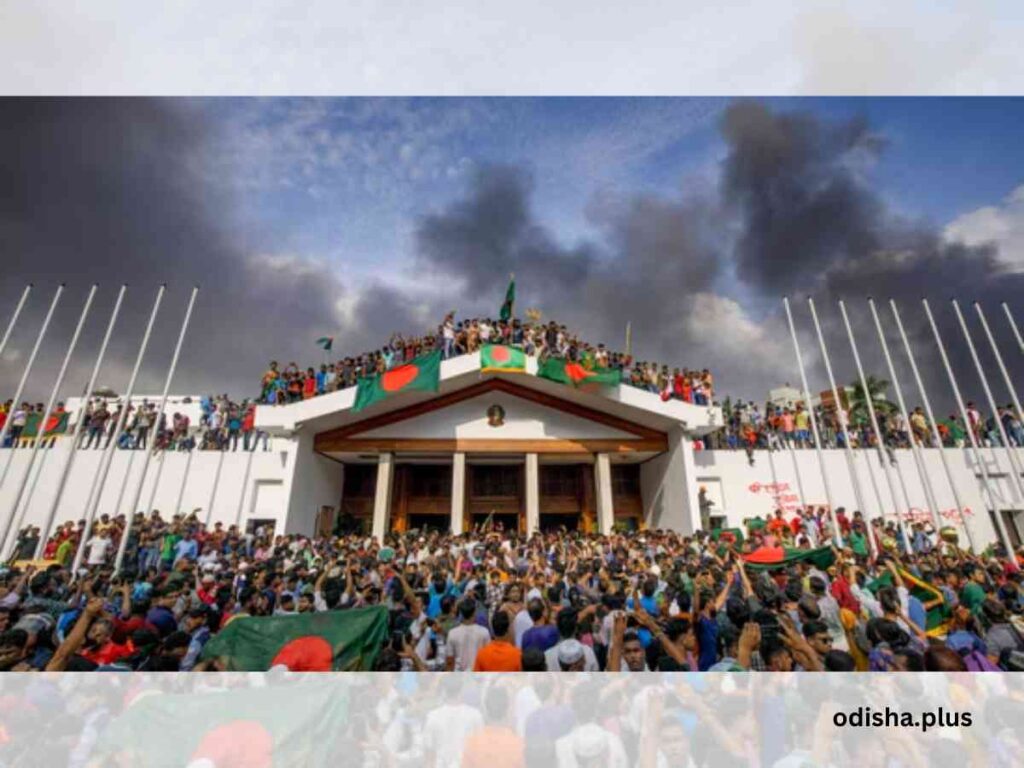In light of the recent turmoil in Bangladesh, the issue of illegal migrants from the adjacent nation has resurfaced as a significant topic in public discussions
Bhaskar Parichha

The persistent unrest in Bangladesh continues to pose a significant risk of an influx of Bangladeshi nationals into various Indian states. In response to the turmoil in Bangladesh, Odisha has emphasized that security measures have been intensified. Law Minister, Prithiviraj Harichandan, stated that there have been no reports of Bangladeshi individuals entering the coastal state via maritime routes. Harichandan stated that individuals from Bangladesh residing illegally in Odisha will be identified and returned to their home country.
The Odisha government remains vigilant in its efforts to prevent infiltration from the conflict-ridden region of Bangladesh. However, the state’s 18 marine police stations are facing significant challenges due to a shortage of personnel and insufficient resources, hindering their ability to operate effectively.
Coastal Security
According to sources, the state’s 480-kilometer coastline is protected through a three-tiered system: the Indian Navy oversees the outermost boundary, followed by the Indian Coast Guard (ICG), and finally, the marine police stations of Odisha, which were established between 2009 and 2015. Despite this layered defense, the state relies heavily on the Navy and the ICG for coastal security, as the marine police stations are inadequately equipped to handle critical incidents.
The Central Government has approved the establishment of 18 marine police stations under the coastal security initiative for the state, aimed at enhancing security along its entire coastline. These police stations are intended to combat illegal import and export of arms and contraband via maritime routes, prevent the infiltration of unauthorized individuals, deter the entry of anti-national elements, and regulate illegal fishing activities, and protect critical installations situated along the coast.
The state government has allocated 738 positions across various ranks, which include 18 inspectors, 54 sub-inspectors (SI), and 54 assistant sub-inspectors (ASI), along with 144 havildars and 432 constables for the marine police stations. Additionally, the state has sanctioned 270 home guard positions and 280 technical roles for former personnel from the Navy and Coast Guard. However, sources from the state police headquarters indicate that approximately 70 percent of these positions remain unfilled across all ranks, with nearly 30 percent of the technical positions also vacant.
The lack of Assistant Sub-Inspectors, havildars, and constables present a significant obstacle in securing fish landing centers, ensuring the safety of critical coastal installations, and conducting maritime patrols. Although the state government has hired police officers for marine police stations, Superintendents of Police often assign these personnel to other police stations within their districts to better manage local issues and address registered cases.
Ministry Guidelines
In accordance with the directives from the Ministry of Home Affairs (MHA), marine police stations are mandated to conduct sea patrols for over 150 hours each month. Previously, the Ministry reimbursed the fuel costs for the boats. However, in recent years, the Superintendents of Police (SPs) in districts with marine police stations have been responsible for these expenses. Each of the approximately 15 fast interceptor boats requires between 40 and 60 liters of fuel for one hour of patrolling. Due to insufficient funding for fuel, effective sea patrols are not being maintained.
Additionally, the coastal security division of the Odisha Police lacks a dedicated command and control center and does not possess its own jetty or permanent office, currently operating from the outdated premises of the Economic Offences Wing (EOW) of the Crime Branch in the capital. In response to the heightened tensions in Bangladesh, temporary measures have been implemented to bolster security along the coast in the districts of Balasore, Bhadrak, Kendrapara, Jagatsinghpur, Puri and Ganjam to prevent any potential infiltration via sea routes.
The initial five nautical miles are under the protection of Odisha’s Marine Police, while the area extending from five nautical miles to the country’s maritime boundary, located 80 kilometers from the coast is overseen by the Coast Guard. Additionally, the Indian Navy is actively monitoring and patrolling international waters.
Government sources say that 3,740 illegal Bangladeshi immigrants have been identified across seven districts in Odisha. Among these, 1,649 are located in Kendrapara, 1,112 in Jagatsinghpur, and 655 in Malkangiri.
(The author is a senior journalist and columnist. Views expressed are personal.)

























